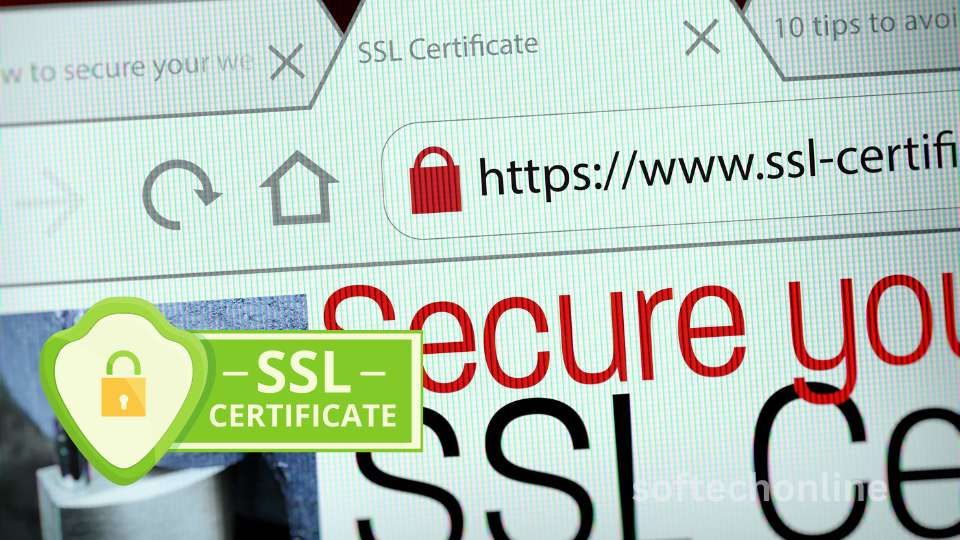In an increasingly digital world, website security is paramount. Whether you’re running a personal blog or managing an e-commerce platform, safeguarding your website from threats is essential. Let’s explore practical steps to enhance your website’s security and protect your valuable content. Let’s explore practical steps of how to make your website Secure.
1. Install an SSL Certificate
An SSL (Secure Sockets Layer) certificate is your website’s first line of defense. It encrypts data exchanged between your server and visitors’ browsers, ensuring secure communication. Here’s how to get started:

- Purchase an SSL certificate or use the free service called “Let’s Encrypt.”
- Choose the right type of SSL certificate: domain validation, business validation, or extended validation.
- Keep your SSL certificate up to date to maintain trust and search engine visibility.
2. Use Security Software or Plugins
Just as you protect your computer with antivirus software, shield your website with security tools:
- Website Firewalls: Subscribe to a website firewall service like Sucuri Firewall for continuous protection.
- Security Plugins: If you’re using platforms like WordPress, explore free or paid security plugins tailored to your hosting service.
- Sucuri:
- Sucuri is an industry leader in WordPress security.
- They offer a free Sucuri Security plugin that helps you harden your website’s security and scan for common threats.
- The real value lies in their paid plans, which include the best WordPress firewall protection.
- The firewall filters out malicious traffic even before it reaches your server.
- Wordfence:
- Wordfence is a popular security plugin with both free and premium versions.
- It provides features like firewall protection, malware scanning, login security, and real-time monitoring.
- Wordfence also offers country blocking and IP blacklisting.
- iThemes Security (formerly Better WP Security):
- iThemes Security is another robust plugin.
- It offers features such as brute force protection, file change detection, and two-factor authentication.
- The plugin also helps you hide sensitive information and strengthen your login security.
- Sucuri:
3. Prevent Users from Uploading Files
Allowing users to upload files introduces security vulnerabilities. Follow these steps:
- Limit Upload Forms: Remove forms that allow file uploads whenever possible.
- File Type Restrictions: If you must allow uploads, restrict them to specific file types (e.g., JPG for photos).
- Email Submissions: Set up an email address for submissions instead of direct website uploads.
4. Regularly Update Your Website
Outdated software and scripts are like leaving your back door unlocked. Stay vigilant:
- Software Updates: Keep your website’s software, security patches, and scripts up to date.
- Certificates: Ensure your site’s certificates are current.
- Hosting Service Patches: Install updates from your hosting service promptly.
5. Multi-Level Login Security
Implement robust login security measures:
- Strong Passwords: Encourage users to create uncrackable passwords.
- Multi-Factor Authentication (MFA): Enable MFA for added protection.
- Admin Privileges: Limit admin access to authorized personnel.
6. Regular Backups
Back up your website regularly:
- Scheduled Backups: Set up automated backups to a secure location.
- Off-Site Storage: Store backups away from your server to prevent data loss.
7. Change Default CMS Settings
Hackers often target default settings. Customize your content management system (CMS):
- Admin URLs: Change default admin URLs to unique ones.
- Default Usernames: Avoid using default usernames like “admin.”
Checklist on how to Make Your Website Secure :
- Use a Wildcard SSL Certificate: A Wildcard SSL Certificate uses 256-bit encryption to secure a website and its sub-domains. Adding HTTPS to your website can help users trust you more.
- Use strong passwords: Strong passwords can help protect against brute force attacks.
- Use a security plugin: Security plugins can detect and remove malware from WordPress sites. Some examples include Sucuri and MalCare.
- Enable Two Factor Authentication (2FA): 2FA can help prevent attackers from brute forcing their way into a website.
- Use a Web Application Firewall (WAF): A WAF can prevent attacks before they reach your site. It checks visitor requests and rejects malicious ones based on a pre-set list of rules.
- Scan your website for vulnerabilities: Regularly scanning your website can help identify and fix security vulnerabilities.
- Update your site regularly: Keeping your site up to date helps ensure it’s running the latest software and is compliant with the latest security standards.
- Use anti-malware software: Anti-malware software can help protect your website.
- Back up your site regularly: Backing up your site regularly can help protect it.
- Work with a reliable hosting provider: Working with a reliable hosting provider can help secure your website.
Remember, website security is an ongoing process. Regular audits, monitoring, and proactive measures will keep your site safe. Prioritize security to build trust with your users and protect your online presence.
References:
- How to Secure Your Website: 9 Steps (with Pictures) – wikiHow
- How to Secure a Website: 7 Proven Things You Must Do – ThemeIsle
- Website Security – 9 Tips on How to Make Your Website Secure
- What is website security? How to secure your website – Wix.com
- 7 Ways to Secure a Website for Free in 2023 – HubSpot Blog
